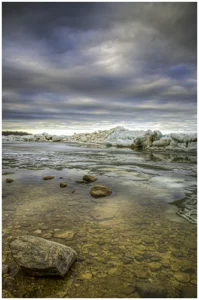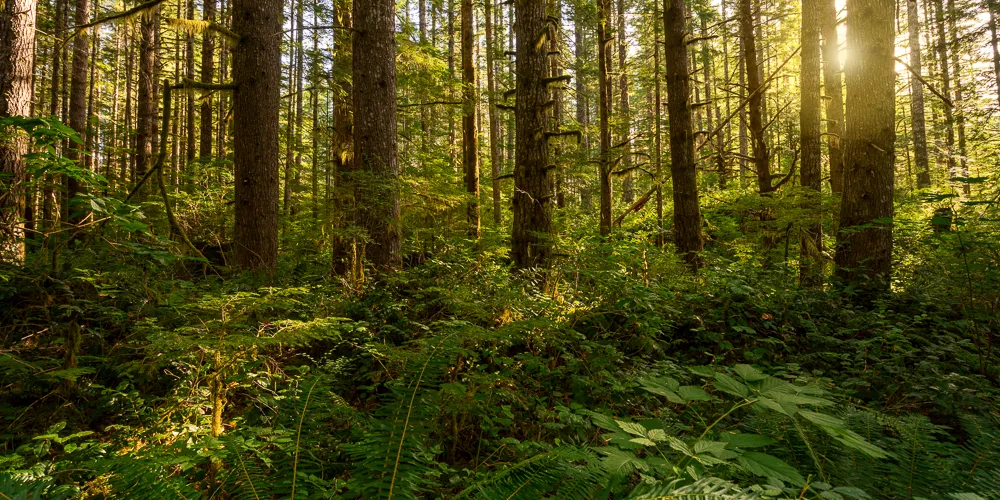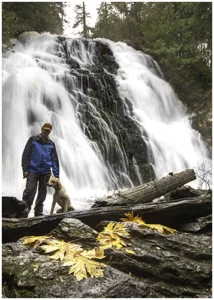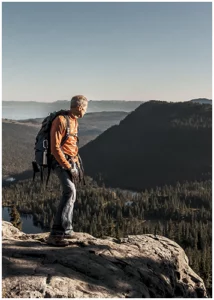
ON1 NoNoise AI Review: Eliminate Noise & Sharpen Your Photos
Are you tired of noise or grain messing up your photos? ON1 NoNoise AI could
Grand Opening & Black Friday Sale = 50% Off


Did you know that Nicéphore Niépce, almost 200 years ago, paved the way for future landscape photographers by taking the first landscape photo? He apparently took the world’s first landscape photo from his French estate window in 1826 or 1827. This early photo started a tradition that now includes fine art, nature, astro, urban, and even aerial photography. Starting your landscape photography journey connects you with a long-standing tradition of sharing the beauty of our world through landscape images.
Great landscape photography is more than just taking lovely pictures. It’s an art that needs skill, patience, and a love for nature. This guide is for beginners and pros alike, aiming to help you make photos that touch people’s hearts.
We’ll cover the key parts of making your landscape photo stand out. We’ll discuss light, composition, and camera settings. You’ll also discover the best times to shoot and create photos that tell stories of the places you visit.
Light is key in landscape photography. It sets the mood and adds emotion to your photos. Learning about light is vital.
Soft light creates gentle shadows and bright colours, enhancing your photographs. This is noticeable on cloudy days or in the shade of trees. Hard light creates strong shadows and stark contrasts. Side lighting adds texture and depth to landscape images, making scenes more interesting.
Golden hours bring warm, bright colours to scenes. Blue hour produces soft pastel colours, making it ideal for calm shots. These times are crucial for amazing landscape photos.
My recommendations are as follows:
| Lighting conditions | Time | Characteristics | Best for Landscape |
|---|---|---|---|
| Golden Hour | 1 hour after sunset or before sunrise | Warm, soft light | Dramatic landscapes and silhouettes |
| Blue Hour | Just before sunrise of after sunset | Cool, defused light | Cityscapes and water reflections |
| Midday | 10 AM - 2 PM | Harsh direct light | Desert scenes, black and white photography |
Light reflecting from water or buildings adds a special touch to your photos. City lights at night make for stunning scenes, especially during the blue hour.
Light makes photography. Embrace light. Admire it. Love it. But above all, know light. Know it for all you are worth, and you will know the key to photography
George Eastman
To start capturing landscapes like a pro, you need the right gear. A weather-sealed camera body is crucial for shooting in different weather conditions. Wide-angle lenses capture big scenes, while standard lenses give a natural view. Telephoto lenses are excellent for distant details.
Stability is key in landscape photography. Get a sturdy tripod with a ball or geared head. This setup stops camera shake and lets you make precise shots.
Filters change the game for light and color. Keep polarizers and neutral density filters in your bag. A remote shutter release is also useful to cut vibrations during long shots.
| Essential Equipment | Purpose |
|---|---|
| Water-sealed cameras | Protection in a variety of conditions |
| Wide -angle lens | Capturing expansive scenes |
| Telephoto lens | Focusing on distant details |
| Carbon-fibre tripod | Stability for sharp images |
| Filters (polarizers, ND) | Lighting management and colour enhancement |
For those long photo trips, be sure to get a comfortable, water and dust-resistant backpack. It keeps your gear safe and easily accessible. Also, bring head lamps and hand warmers for those cold early or late nights.
Black Friday deals on now! Save up to 77% – Plus an additional 10% when you use code bwild10
Learning the secrets of outstanding landscape photos is key. These skills help guide viewers’ eyes and make your images more emotional.
The rule of thirds is a basic composition technique. Imagine your frame split into a 3×3 grid. Place important items along these lines, or where they intersect.
This makes your photo balanced and interesting. For something new, try composing your landscape images using the golden ratio. It adds a natural flow to your shots.
Focus on intriguing locations, such as dramatic cliffs or calm lakes. Put them where they pull viewers into your scene. Use natural lines, such as wildflowers or paths in the foreground, to draw the viewer’s attention to the scene.
Walk around your scene to find new views. Changing where you stand can show you different shots. Try different frame sizes and angles to make your photos more interesting.
| Composition Technique | Purpose | Example |
|---|---|---|
| Rule of Thirds | Create balance | Horizon on lower third line |
| Leading Lines | Guide the viewer's eyes. | Winding river to mountain |
| Panoramic | Capture wide vistas. | Sweeping mountain ranges or cityscapes |
| Framing | Focus attention | Around sunset, trees branch out. |
Composition is the strongest way of seeing
Edward Weston

Learning how to use your camera settings is key to taking outstanding landscape photos. In tutorials, you’ll find three main settings that are crucial.
Aperture affects how much of your photo is in focus. A small aperture (high f-number) means more of the scene is sharp. For sharpness from front to back, try f/11 or f/16. But feel free to use wider apertures to focus on certain parts of your landscape photograph.
Shutter speed helps you capture movement or make scenes look still. Fast speeds freeze action, while slow ones blur it. Use long exposures for smooth water or moving clouds.
ISO affects how sensitive your camera is to light. In bright scenes, use low ISOs like 100 or 200. Increasing your ISO in low light could cause noise in the shadows.
| Setting | Typical Range | Effect |
|---|---|---|
| Aperture | F/8 - F/16 | Controls depth of field |
| Shutter speed | 1/125th - 30 sec | affects motion blur |
| ISO | 100-10,000 | Impacts image noise |
These settings work together. Finding the right balance is important for a properly exposed photo. To improve your understanding of the exposure triangle, practice adjusting it in different situations.
Learning landscape photography is enjoyable as it blends your artistic and technical skills. It’s also about your understanding of how light works to capture stunning views. The right gear helps you see detail. And knowing how to compose a shot makes your photos stand out.
Getting your camera settings correct is key to outstanding landscape photos. Try different settings like aperture, shutter speed, and ISO to get it just right. Remember, the more you practice, the better you’ll get.
To get better at landscape photography, join online groups, go to local photo shows, or check out more of our posts. With hard work and these tips, you’ll soon make photos that show the beauty of nature.
In landscape photography, light is key. It sets the scene’s mood and feeling. Soft, hard, and directional lights change how your landscape images look and feel.
Golden hours, twilight, and blue hour can make your landscapes stand out as the best landscape moments.
You’ll need a weather-sealed camera body and wide-angle lenses for big scenes. Standard lenses give a natural view, and telephoto lenses show distant details.
Don’t forget a strong tripod, filters, a remote shutter release, and a water-resistant backpack for your gear.
To improve your shots, use the rule of thirds and the golden ratio. Place focal points carefully and use natural lines to guide the eye.
Try different angles and aspect ratios to make your photos more interesting.
Key settings include aperture for depth of field, shutter speed for movement, and ISO for light control. Long exposures can make water smooth or show cloud movement.
Use ND filters to manage light in these shots.
Keep practicing and exploring new places. Think about the weather and seasons. Use online courses, go to photography shows, and join photography groups for tips and inspiration.

Are you tired of noise or grain messing up your photos? ON1 NoNoise AI could

Every time I get ready to photograph a waterfall, I feel a rush of excitement.

If you’re looking for an easy hike, well… this hike is not it! Most of